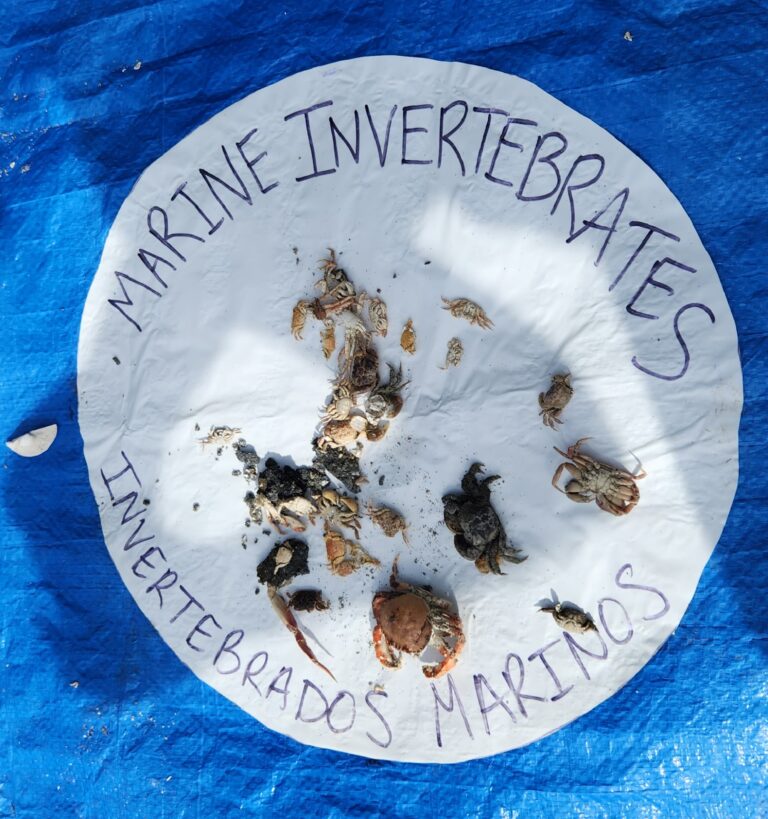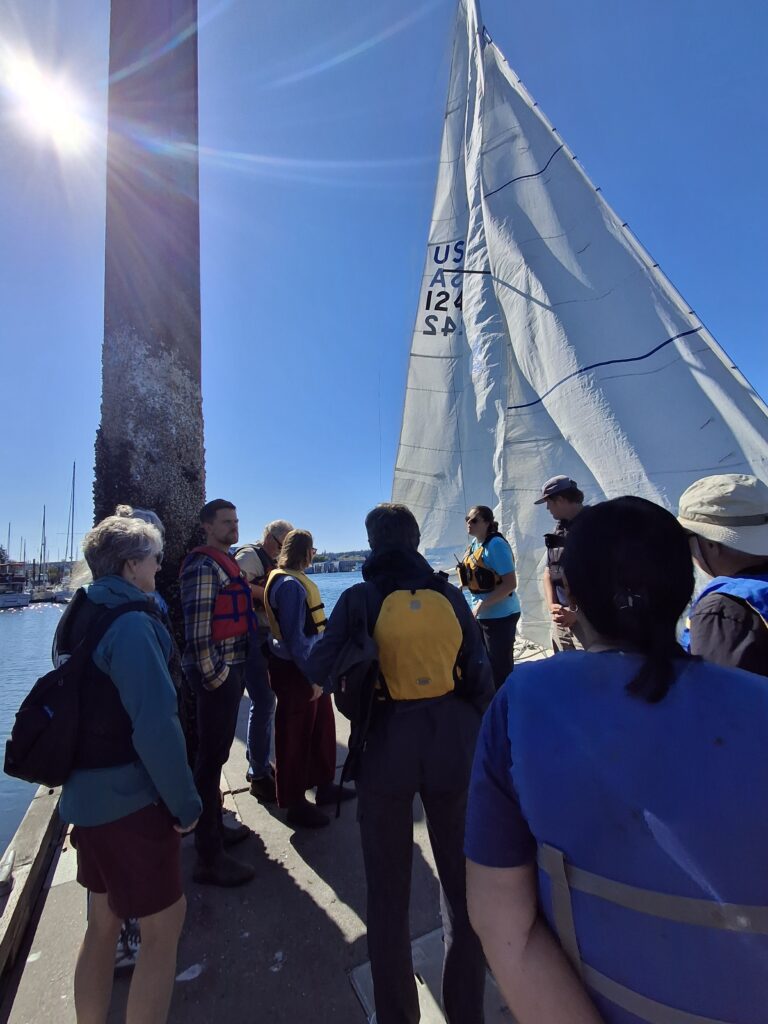The La Salle High School campus includes a number of unusual features: a fish hatchery, a stream, and . . . screw traps. What are screw traps, you ask?
These large floating metal containers consist of a cone, a trap box and pontoons. When juvenile salmon and steelhead swim into range, the contraption rotates so that the current pushes them into the trap box where they remain until they can be measured and sampled, then returned to the stream.
In March, educators in Mid-Columbia Fisheries Enhancement Group’s (MCFEG) Salmon Outside cohort attended a workshop on the La Salle campus and after lunch they accompanied MCFEG staff to the stream to check on the screw traps. That’s when they discovered the juvenile Pacific Lamprey.
“We got to see the biologist take a notation of when and where it was caught and take a fin clipping for DNA analysis,” explains Megan Rivard, PEI’s Associate Director, Columbia Basin & Coast. “She said it was only the second one they’ve caught this year, and I think the teachers understood what a big deal this was because this is a protected species. This was all happening right at their school, with this roaring water within a stone’s throw of the biology building.”
“I’m so glad to be participating in this round,” she says. “It’s a good reminder that there is always more to learn and we can always improve our practice.”
— Cathy Pietsch, 5th and 6th grade science teacher, Naches Valley Middle School
Salmon Outside is a year-long program providing K-12 educators with resources and skills to create Meaningful Watershed Education Experiences (MWEEs) for students, along with STEM and Equity clock hours. Participants spend 35 hours at in-person and online workshops and completing asynchronous tasks. PEI provides logistical support and some facilitation while MCFEG leads the program side.
At this workshop, the day began with a tour of the La Salle High School hatchery and learned about the school’s partnership with Yakama Nation Fisheries. “The day was focused on understanding how to build learning relationships with our tribal partners,” Rivard explains, “so this was perfect. Since its inception, the school has had this partnership where the students are responsible for monitoring the salmon daily and then eventually releasing them.”
Caity Pietsch is a 5th and 6th grade science teacher at Naches Valley Middle School and a member of the Salmon Outside cohort. “I didn’t realize hatchery operations could be done at a smaller-than-commercial scale and it was so cool seeing how the students are so involved with helping run the whole operation,” she says. “I also really appreciate that this is a cohort and not just a one-off workshop.”
Next, participants explored the Since Time Immemorial curriculum and how salmon connect to tribal history and culture. “Many of the teachers hadn’t heard of STI,” Rivard says. “Only a couple of them are in the process of adopting it because they have a new social studies curriculum. The majority had no familiarity with this curriculum.”
Then came the stream survey – and the lamprey. “That kind of derailed everything,” Rivard says. “We had one more activity planned, but the lamprey was one of those teachable moments you don’t want to miss.”
The cohort will meet twice more in person before wrapping up. They’ll visit Nachez Middle School and later, Bateman Island, where a major restoration project is planned to restore salmon habitat. Every participant will design their own MWEE by program’s end in preparation to implement the lessons next year.
Pietsch has been implementing the Salmon in the Classroom curriculum and collaborating with MCFEG for almost ten years. She almost didn’t participate in the cohort but wanted to support a colleague who is implementing the curriculum for the first time this year. “I’m so glad to be participating in this round,” she says. “It’s a good reminder that there is always more to learn and we can always improve our practice.”




